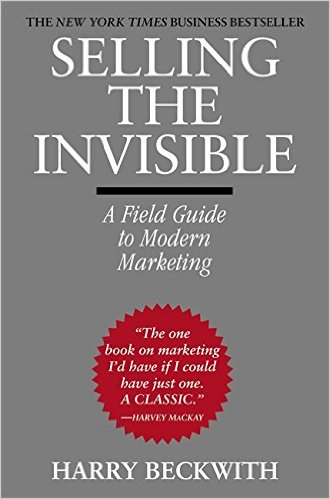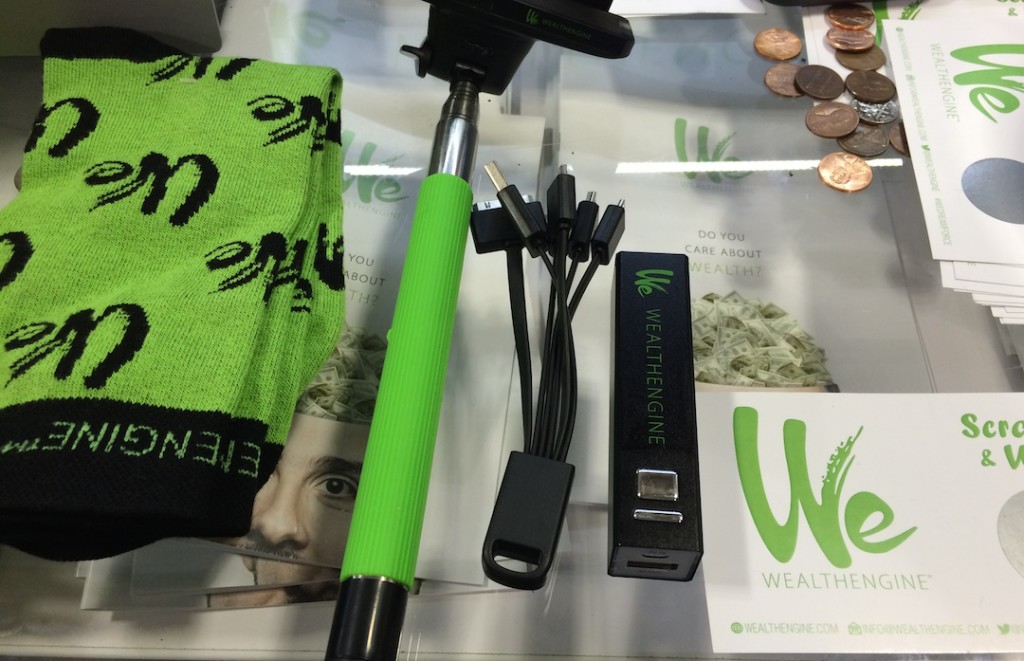
How is a service business like a product business? According to Harry Beckwith, the question no longer even relevant – every business is a service business.
In his marketing classic Selling the Invisible: A Field Guide to Modern Marketing, author Beckwith proves this fundamental truth, and reveals what marketers must do to win and retain customers. The content is broken down into 11 thematic sections, each containing a number of very brief anecdotes that demonstrate a fundamental marketing lesson.
Beckwith has a genius for storytelling. He has selected stories that are so compelling they make the resulting lesson seem obvious in retrospect. His skill reinforces these lessons in a way that textbooks cannot, and his consistency and brevity give the lessons more power than any how-to blog. For this reason alone, Selling the Invisible should be on your bookshelf. Pick it up, turn to any page, and gain a valuable piece of knowledge.
I count 162 lessons. If there were 365, a daily flip calendar would be the perfect format (and the perfect gift for any marketer).
 This book is remarkable for its ability to foresee, and shape, future trends in marketing. Though published in 1997, Selling the Invisible anticipates the digital marketing future by imparting concepts we take for granted today: Set your business apart, think continuous improvement, disrupt yourself before your competitor disrupts you, marketing is everyone’s job, improving your service is improving your marketing, market to your core competency, dominate your niche, et cetera. Beckwith proves these maxims without the B-school terminology, and without digital examples. Yet the fact that these concepts are accepted wisdom today, and part of any business school curriculum, points to Beckwith’s influence and foresight.
This book is remarkable for its ability to foresee, and shape, future trends in marketing. Though published in 1997, Selling the Invisible anticipates the digital marketing future by imparting concepts we take for granted today: Set your business apart, think continuous improvement, disrupt yourself before your competitor disrupts you, marketing is everyone’s job, improving your service is improving your marketing, market to your core competency, dominate your niche, et cetera. Beckwith proves these maxims without the B-school terminology, and without digital examples. Yet the fact that these concepts are accepted wisdom today, and part of any business school curriculum, points to Beckwith’s influence and foresight.
Most powerful is the core message that every business is a service business. This means that the marketing imperatives of an electronics maker and a software designer are the same. Businesses of all kinds keep customers based on the level of interaction they provide, on their attention to detail, on the strength of their brand. In 2015, businesses also face the leveling plain of social media, with its immediate feedback and direct customer service. Surely Beckwith could not anticipate this coming technology, yet he prepares his readers for it perfectly.
I was pleased to see Beckwith spend time with concepts of organizational behavior (again, he does not use the academic term). The science of organizational behavior uses empirical psychology to show how humans make decisions. Mastery of this discipline gives any marketer a huge advantage. Beckwith uses the section he calls “How Prospects Think” to explain such concepts as familiarity bias, recency bias, anchoring, and the halo effect. He offers the best 15-minute introduction to marketing psychology I have seen.
Even in a universally strong volume, the section on positioning stands out as a tour de force. Start with a fanatical focus on the one thing that distinguishes your business, and then position outward from there. If you cannot find this one factor, look harder until you do find it. Beckwith declares that differentiation is the starting point of any communication strategy. It is hard to disagree with him.
I particularly enjoyed Beckwith’s stories about making your marketing exciting, a concept he terms “vividness”.
With very few exceptions, each story hits home and illustrates its lesson well, but a few fall short by offering a point that is too breezy. For example, Beckwith tells the story of a passionate salesman who wins every deal by being his authentic, charismatic self. This engaging vignette closes with the advice, “You should copy him”. Suppose you are not the natural salesman of this story? What if you are affectless, and not affectionate? It cannot be possible to imitate a presenter whose very power is his authenticity. The story is terrific, however the lesson does not follow so easily. Just a few of the stories fall flat in this way.
Selling the Invisible is visionary, a series of parables that have stood for 18 years with no diminution of their power. I believe this work will still be essential for future generations of marketers.
Remember, Beckwith tells us, that your first competitor is indifference. Your alternative to reading Selling the Invisible is to read nothing at all. That choice would be a mistake.
Buy the book.







